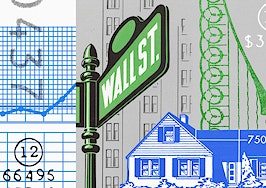This report is available exclusively to subscribers of Inman Intel, a data and research arm of Inman offering deep insights and market intelligence on the business of residential real estate and proptech. Subscribe today.
The book is closed on the busy summer real estate months of 2023, and industry decision-makers are turning the page to the slower fall market.
Uncertainty abounds in an environment where rates remain high, listings are scant, buyers are sidelined and upward pressure on home prices continues.
That’s why Intel sought out Windermere Real Estate Chief Economist Matthew Gardner for insights as summer rolls into fall next week. On a video call Tuesday from Seattle, Gardner revealed the challenges real estate may face this fall in an constrained environment — and why it could play out differently than a year ago.
His comments below have been edited for length and clarity.
Intel: Last year, we saw a flicker of seasonality return to the fall housing market. Homes were finally sitting longer on the market and inventory started to make a meaningful — but temporary — recovery. But then a lot of that evaporated. What can we expect this fall in terms of inventory patterns?
Gardner: Starting last summer, Jerome Powell of the Fed, he came out spring of last year — January, it was — and said, ‘We’re moving away from quantitative easing to quantitative tightening.’ They had been on this massive spending spree for a couple of years, to the tune of about 2.3 trillion dollars that they spent, not only just to stabilize the economy as a whole, but to stabilize the housing market.
Now, by making all these purchases of Treasurys, of [mortgage-backed securities], that allowed mortgage rates to drop down to levels which have never been seen before, and will likely never be seen again.
So when he made that announcement, it took a lot of time to flow through. And so I think there was a view that we were going to see a significant drop in the market because rates were going to be rising. And we started to see some price corrections in the second half of the year.
And so I think there’s a view by some consumers out there that, ‘Are we back into 2007 again? If that’s the case, let’s get out now.’ But it didn’t continue through this year. Prices bottomed out in December of last year. All of a sudden some stability came back into the market, and at the same time, we had a lot of people who said, ‘OK, I can afford my mortgage. Why am I going to sell?’
So it really has been an argument this year thus far of it being remarkably supply-constrained. And, quite frankly, I think that that rate-lock situation that a lot of people have been talking about is real. And as such, although we will still see some churn, turnover, outside of that, the choice to move — why would you? You won’t. And ironically, it’s the supply limitations that have actually supported the [home] values. That’s why I think we are in a very different place today.
And quite frankly, it’s a market where, yeah, last month we did see an uptick in inventory levels, but let’s be real here. You have to relate it back to the last normal year in 2019. And we’re down 20 to 40 percent, relative to the amount of homes on the market at that same period of time.
Compared to, say, last fall, when we were in correction mode — at least in terms of prices — and the inventory was actually temporarily on the rise, what do you think is different about the dynamics heading into this fall?
How much a share of inventory growth was a function of the people who had taken forbearance and come to the end of the forbearance period, where you have to make the bank whole again?
Forbearance [is] the situation whereby — really, really smart program that FHFA put into place — where you could stop paying your mortgage [and] you would not be foreclosed upon. But at the end of that forbearance period, you’ve got to refinance or basically make the bank whole. In the first couple of months back in May of 2020, 1 in 10 homes in America was in forbearance. Now it’s a rounding error.
But I think last fall, it’s quite likely that a lot of the inventory growth was because people were going to be at the end of their forbearance period, saw where rates were, and [refinancing] didn’t make sense. So in order to make the bank whole, they sold. That is an anomaly which we are certainly not seeing today.
So you think that last year’s inventory rise could be significantly explained, potentially, by that forbearance period?
Yeah, if we think about it. Certainly nothing is 100 percent to a cause, but just theoretically it would make sense given the period of contraction, the share of homes in that program, a bump in inventory. But again, that’s depending on who you ask.
Again, I would argue that from a normalized perspective, you’ve got to go back to 2019. And in 2019, inventory ranged from 1.39 million up to a max of 1.92 million in June.
So we are still a third below the level you’d expect to see. And a third is about the number I’m seeing in a lot of our markets here in the western U.S., in terms of inventory levels relative to that same month in 2019.
It’s a fascinating puzzle for the market right now. It’s so counterintuitive. We’re in a down market — transactions are down, buyers are on the sideline — and yet there’s all this upward pressure on home prices.
Ironic, isn’t it?
Yeah. And so for the coming fall, I’m seeing a lot of projections — Fannie Mae, for instance, and others — that are expecting pretty strong continued home-price growth, even during the fall and winter this year, which typically is a down season for home prices. At least, they kind of hold steady for a while.
It really comes down to Econ 101, right? We’re creating households; we know that. The argument years ago was that millennials would never buy a home because they wanted to be too mobile. That was rubbish. They did, and they will continue. In fact, Gen Z behind them, although they’re still very young now, about 67 percent of them believe that buying a home will be the most astute financial investment they’ll ever make.
So that is still in place. But in conversations that I have with the offices in the markets that I travel to a lot, the view is, again, it’s the old adage: Marry the house and date the rate. They are betting on rates coming down. I think that is a reasonable bet to take. However, the pace of contraction in mortgage rates is certainly far slower than anyone, including myself, had been forecaster. This bond market has quite frankly been petulant. They’re acting like the babies in the room, not the grown-ups. And so it’s going to take a bit longer to get back to that point.
And also I would argue going forward, we could see some more listings depending on companies and how steadfast they are in their requirement that employees come back to the office. Back in the day, people moved — they moved a long way. They left Seattle. They moved to Austin. They moved to Boise, Idaho.
So maybe we could see a bump in inventory, but again it’s going to be insufficient to really suggest that we’re moving back toward a reasonable market.













